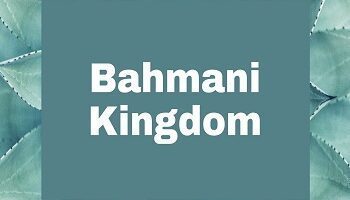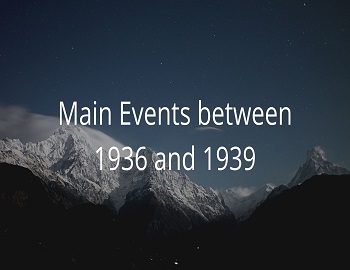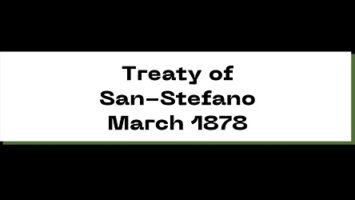Table of Contents
The Bhakti Movement:
In the 6th century A.D., the Bhagavata Purana placed the concept of bhakti on a very high pedestal. The word ‘Bhakti’ means devotion to God. The Bhakti Movement was not new, its doctrine had its origin in the Bhagavadgita and the Upanishads. The Bhaktas of God did not believe in any sort of caste distinction. They advocated love and devotion to God and discarded all sorts of rituals and ceremonies. They preached the oneness of God and “that all religions were but roads leading to the same goal.”
Salient Features of the Bhakti Movement:
- It is Bhakti or devotion to God alone that can help man attain salvation.
- It is important to follow a true guru for realizing God.
- The Bhakti movement was essentially monotheistic and the devotees worshipped one personal God, who could either have the form (saguna) or be formless (nirguna). The followers of the former, known as Vaishnavas, were further subdivided into Krishnamargis and Ramamargis, who regarded Ram or Krishna- both incarnations of Vishnu- as their personal God, respectively. The followers of Nirguna Bhakti discarded idol worship. They said that God is omnipresent and resides within the heart of man.
- They stressed the singing of hymns with deep devotion.
- All men are equal and no one is superior or inferior.
- Caste distinctions, rituals, fasts, etc. are useless and lead to nowhere.
- All men should be tolerant.
- The Bhakti saints preached in the simple language of the masses and, therefore, immensely contributed to the development of modern Indian languages, such as Hindi, Marathi, Bengali, and Gujarati.
Proponents of the Bhakti Movement:
Adhi Shankara Charya:
- Born in Kaladi, Kerala in 788 A.D.
- Propounded Advaita philosophy.
- Wrote commentaries on Brahmasutras, Upanishads, and Gita.
- Believed in ‘Maya‘ as the world of appearance is illusory.
- The individual soul is absolute in itself and no other.
- ‘Gyana‘ alone can lead to salvation.
- His books- Upadesh Sara, Viveka Chudamani, Bhaja Govindam Stotra, etc.
- Established Mathas at Sringeri, Dwarka, Puri, and Badrinath.
Ramanuja:
- In the twelfth century, Ramanuja, who was born at Sriperumbudur near modern Chennai, preached Vishistadvaita. According to him, God is Sagunabrahman.
- Founded the Shrivaishnava sect.
- Wrote Sri Bhashya, Vendanta Dipa, and Gita Bhashya, etc.
- Nimarbaka, a contemporary of Ramanuja. He believed in the philosophy of Vishistadvaita and laid emphasis on surrender to God.
Ramananda (1360-1470):
- Born in Allahabad and settled in Varanasi.
- He was originally a follower of Ramanuja and was the first great Bhakti saint of North India.
- He founded the Ramanandi sect.
- Ramananda adopted Hindi as the medium of his discourses.
- Had 12 disciples from all castes–
- Ravidasa the cobbler.
- Kabir the weaver.
- Dhanna the Jat peasant.
- Pipa the Rajput.
- Sena the barber.
- Surasurananda.
- Parmananda.
- Mahananda.
- Sri Ananda.
- Bhavananda.
- Sukhanda.
- Asananda.
- His teachings gave rise to two schools of thought in the orthodox (saguna) represented by Nabhadas and Tulsidas, the author of Ramcharit Manas.
- The Liberal school is represented by (Nirguna) Kabir, Nanak, and others.
Kabir (1440-1518):
- The most radical disciple of Ramananda.
- Born near Benaras and brought up by a Muslim Weaver, Niru and Nima.
- Married to Loi and had a son named Kamal.
- Believed to have been persecuted by Sikandar and died at Maghar (U.P.).
- His ‘Dohas’ and ‘Sakhi’ (poems) are found in his work ‘Bijak‘ and are very popular.
- Believed in Pantheism i.e. God is everywhere.
- Wanted inter-religious and intra-religious unity.
- Abandoned formal religious practices.
- Formulated a code of ethics for every human to follow.
- Was against all forms of sectarianism but on his death, his Muslim disciples organized themselves in Maghar, where they founded a monastery; his Hindu disciples were organized into order by Surat Gopala, with their center in Varanasi.
- He is regarded as the greatest of the mystic saints and his followers are called Kabirpanthis.
Guru Nanak (1469-1538):
- Born near Talwandi (now Nanabana in Pakistan).
- A disciple of Kabir.
- ‘Abide pure amidst the impurities of the world’ was one of his famous sayings.
- Preached casteless, universal, ethical, anti-ritualistic, monotheistic, and highly spiritual religion.
- Started free community kitchens called ‘Guru ka langar‘ to inculcate the feeling of equality and brotherhood among his followers.
- Laid stress on the purity of character conduct and also the need for a ‘guru’ to reach God, who was ‘Nirankara‘ (formless).
- His mission was to reform the Hindu religion on the basis of monotheism.
- His inspiring poems were later collected in the ‘Adigrantha‘.
- Died in 1538 at Kirtarpur.
- His followers founded a new religious sect, Sikhism and it had ten Gurus.
- Guru Nanak.
- Guru Angad.
- Guru Amardas.
- Guru Ramdas- Laid the foundation of Amritsar.
- Guru Arjundev- During the period of the fifth Guru Arjundev, Harmandir Saheb (Temple of God) was constructed in the midst of the Sarovar. It is popular as Golden Temple nowadays. Guru Arjundev had invited Sufi Saint Mian Mir to lay the foundation stone of Harmandir Saheb. The most significant task of Guru Arjundev was the compilation of Adi Granth. Killed by Jahangir for supporting Khusrau.
- Guru Hargobind- Militarised the Sikh sect and defeated the Mughal army at Sangama near Amritsar.
- Guru Har Rai.
- Guru Har Kishan.
- Guru Tegh Bahadur- executed by Aurangzeb.
- Guru Govind Singh- instituted the custom of Baptism thus formed the ‘Khalsa‘ i.e. completely pure or the Sikhs was chosen by God, on Vaisakhi in 1699. He compiled Daswan Padshah Ka Granth. Stabbed to death by an Afghan fanatic.
Dadu Dayal (1544-1603):
- The most famous of the followers of Kabir’s ideals was Dadu Dayal.
- Born in Ahmedabad.
- Preached in Rajasthan.
- Dadu Dayal founded the Brahmasampradaya or Parabrahma-sampradaya to unite all divergent faiths in one bond of love.
- Dadu Dayal believed not in the authority of scriptures but in the value of self-realization that God is within the hearts of men.
Chaitanya (1486-1533):
- Founder of modern Vaishnavism in Bengal.
- Chaitanya’s original name was Vishwambhar Mishra or Nimai and he was born at Navadwip in February 1486.
- He received Diksha from a saintly man, named Ishwar Puri.
- Chaitanya belonged to the Dasmani sect.
- Chaitanya Charitamrita, his biography was written by Krishnadas Kaviraj.
- He was a great exponent of the Krishnite form of Vaishnavism.
- He is considered by his followers as an incarnation of Krishna or Vishnu.
- His followers organized themselves into a sect called Gaudiya Vaishnavism.
- He settled and died at Puri, Orissa.
- He proclaimed the universal brotherhood of man and condemned all distinctions based on religion and caste.
- He popularised the practice of group devotional singing accompanied by ecstatic dancing. His movement became popular in Bengal and Orissa.
Mirabai (1498-1546):
- Follower of the Krishna cult of Vaishnavism.
- Mirabai was born in Kudvi of the Merta district of Rajasthan.
- She was the only child of Ratna Singh Rathor of Merta.
- Married to Rana Sanga’s eldest son and heir apparent, Bhoraj.
- Undertook pilgrimage to Dwarka and composed her very popular lyrics in Brijbhasha and Rajasthani in the love of her Lord Krishna.
Vallabhacharya (1497-1531):
- Follower of the Krishna cult of Vaishnavism.
- Born at Varanasi into a Telugu family.
- He worshipped Lord Krishna under the title of Srinathji.
- Founder of Shuddhadvaita (pure non-dualism) school of Philosophy.
- His teachings are also known as Pushtimarga or the path of grace.
- He founded the Rudra Sampradaya.
Surdas (1483-1563):
- Surdas was a disciple of Vallabhacharya.
- Surdas lived at the court of Akbar and was popularly known as the blind bard of Agra.
- Surdas was the devotee of Lord Krishna and Radha.
- He believed that salvation can be achieved only through the devotion of Krishna who is Saguna God.
- His famous works- Sur Sarawali, Sahitya Ratna, Sur Sagar.
Tulsidas (1532-1623):
- Tulsidas was born in a Saryuparian Brahmin family in Varanasi.
- Took to a life of a hermit due to wife, Ratnavali’s taunt.
- A worshipper of Rama and composed the famous Ram Charit Manas in 1574.
- Other works- Gitawali, Kavitawali, Vinay Patrika etc.
Bhakti Movement in Maharashtra:
The liberal religion preached by the saint poets of Maharashtra is popularly known as Maharashtra Dharma.
Vithoba or Vitthal the presiding deity of Pandharpur, who was regarded as a manifestation of Krishna.
Bhakti Movement in Maharashtra is broadly divided into two sects- Varakaris (the mild devotees of God Vitthal of Pandharpur) and Dharakaris (the heroic followers of the cult of Ramadasa, the devotee of God Ram).
The three great teachers of the Vithoba cult were Jnaneswar, Namadeva, and Tukaram.
Jnaneswar or Jnanadeva or Dhynaeshwar (13th century):
- Founder of the Bhakti movement in Maharashtra.
- The Varkari sect in Maharashtra was founded by him.
- His famous work is ‘Jnaneswari‘, which is a commentary on the Bhagavadgita and is also called ‘Bhavartha Dipika‘.
Namadeva (14th century):
- He was born in a Tailor’s family.
- Preached the gospel of love and opposed the caste system and idol worship.
- His followers belonged to all castes and chief disciples were Gora (potter), Sena (barber), Choka (untouchable), Janbai (maid), etc.
Tukaram (17th century):
- Contemporary of Maratha Shivaji.
- Tuka Ram believed in a formless God.
- A great devotee of Vithal of Pandharpur.
- He rejected Vedic sacrifices, ceremonies, pilgrimages, idol worship, etc.
Contribution of Bhakti Movement:
(1) Bhakti Movement is known as the medieval renaissance. Nirguna Bhakti was opposed to the caste system. It rejected Brahmanic orthodoxy and advocated for equality between man and man. On the other hand, although Saguna Bhakti made a compromise with the varna system but still at least it tried to relax varna rigidity. For example- even a Saguna saint Tulsidas advocated for the human relationship between the higher and the lower section of society.
(2) Bhakti Movement worked as a bridge between Hindus and Muslims. It influenced the view of a liberal Muslim king Akbar but at the same time, Bhaktism prepared the ground for the emergence of regional states like the Maratha state and the Sikh state.
(3) Nirguna saints always favored domestic life, not ascetic life. It is said that Kabir throughout his life remained to be associated with his occupation like weaving. Furthermore, Nirguna saints advocated for the acceptance of new technology. In this way, they encouraged production.
(4) Bhaktism encouraged regional languages and regional literature. For example- Nirguna saints like Kabir adopted the Hindavi language. Tulsidas and other saints associated with Rama Bhakti encouraged Awadhi language and literature. Likewise, some other saints encouraged the Punjabi language and literature. A saint associated with Krishna Bhakti Narsingh Mehta supported the Gujarati language. On the other hand, Mirabai encouraged the Rajasthani language and literature.
(5) Bhakti Movement gave support to music as well. For example- Swami Haridas appeared to be a great exponent of Indian music. Likewise, Chaitanya and Mirabai supported music in their own way. For example- Chaitanya is given the credit to have started ‘Sankirtana‘ in temples. Even Guru Nanak supported music.
- Montagu-Chelmsford Reforms or the Government of India Act 1919
- Rowlatt Act, 1919
- Jallianwala Bagh Massacre [April 13, 1919]
- The Khilafat Movement, 1919-1920
- The Non-Cooperation Movement (1920-22)
- Simon Commission, 1927
- Gandhi-Irwin Pact: March 5, 1931
- The Government of India Act 1935
- Wardha scheme of education
- Download Ancient Indian History By Makkhan Lal.
- Download Ancient Indian History By Romila Thapar.









Comments (No)